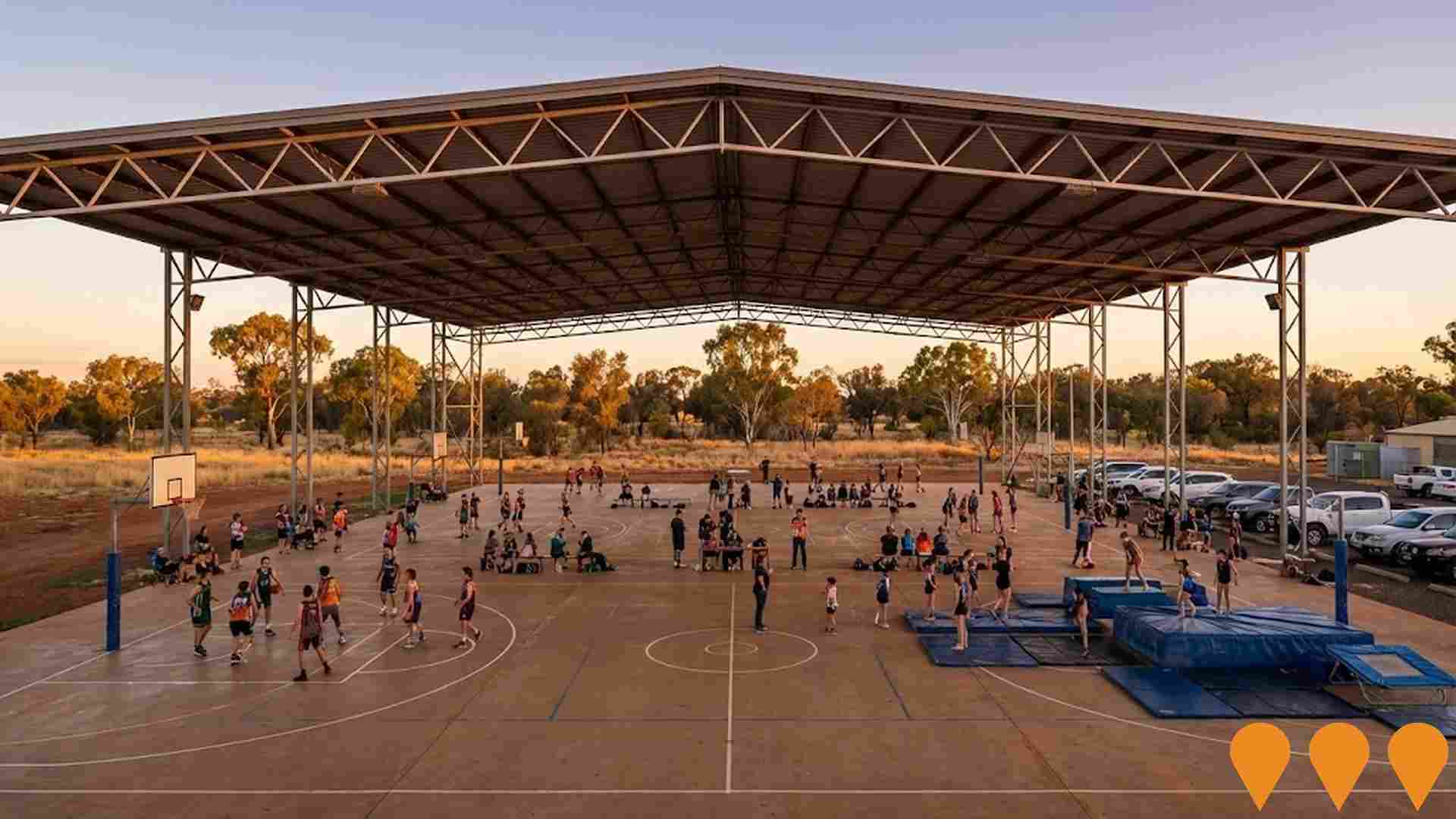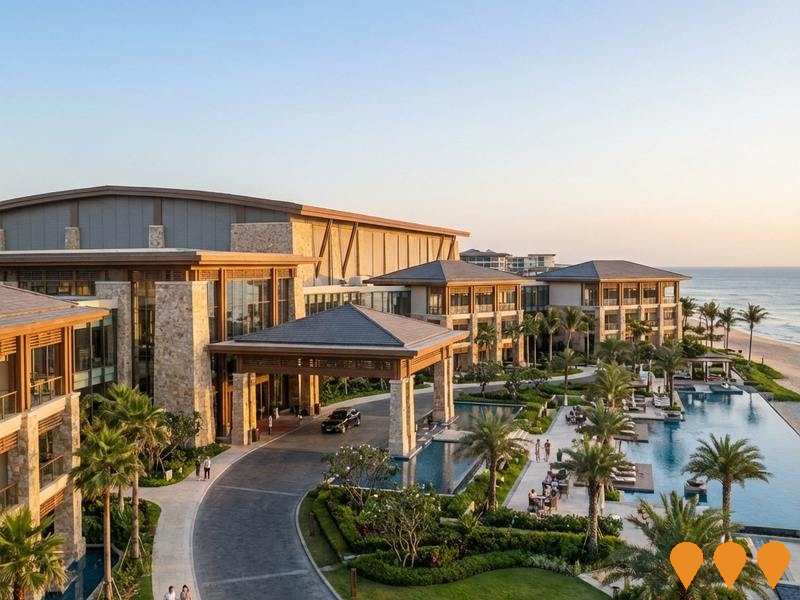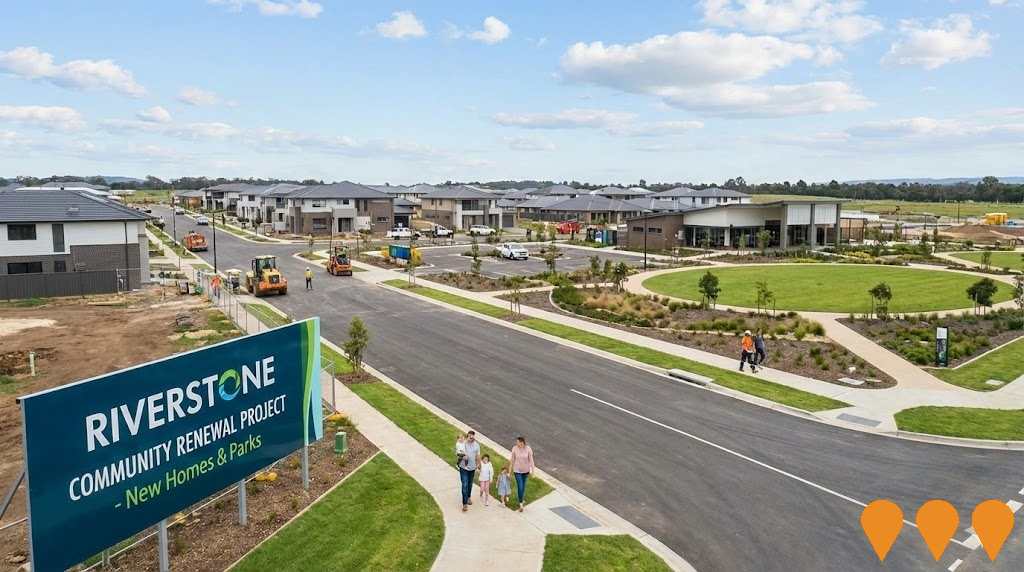Chart Color Schemes
est. as @ -- *
ABS ERP | -- people | --
2021 Census | -- people
Sales Activity
Curious about local property values? Filter the chart to assess the volume and appreciation (including resales) trends and regional comparisons, or scroll to the map below view this information at an individual property level.
Find a Recent Sale
Sales Detail
Population
Dubbo - West lies within the top quartile of areas nationally for population growth performance according to AreaSearch analysis of recent, and medium to long-term trends
As of Aug 2025, Dubbo - West's population is approximately 11,071, showing a 7.3% increase from the 2021 Census figure of 10,317 people. This growth can be inferred from an estimated resident population of 10,902 in June 2024 and an additional 315 validated new addresses since the Census date. The population density is around 159 persons per square kilometer. Dubbo - West's growth rate exceeded that of its SA4 region (3.2%) and SA3 area, indicating it as a growth leader in the region. Natural growth contributed approximately 51.3% to overall population gains recently, with all migration factors also being positive. AreaSearch uses ABS/Geoscience Australia projections for each SA2 area, released in 2024 with 2022 as the base year, and NSW State Government's SA2 level projections for areas not covered by this data, released in 2022 with 2021 as the base year.
Growth rates by age group are applied to all areas from these aggregations for years 2032 to 2041. By 2041, Dubbo - West's population is projected to increase by 2,798 persons, marking a 23.7% gain over the 17-year period.
Frequently Asked Questions - Population
Development
AreaSearch assessment of residential approval activity sees Dubbo - West among the top 30% of areas assessed nationwide
Dubbo - West recorded approximately 74 residential properties granted approval annually. Over the past five financial years, from FY21 to FY25, around 373 homes were approved, with an additional 50 approved so far in FY26. On average, each dwelling built over these years attracted 2.4 new residents per year, reflecting strong demand that supports property values.
New homes are being constructed at an average expected construction cost value of $496,000. This financial year has seen $31.8 million in commercial approvals, indicating robust commercial development activity. Compared to the rest of NSW, Dubbo - West has slightly higher development levels, with 29.0% more per person over the past five years, maintaining good buyer choice while supporting existing property values.
However, development activity has moderated in recent periods. The majority of new building activity consists of detached dwellings at 83.0%, with medium and high-density housing making up the remaining 17.0%, preserving the area's traditional low density character focused on family homes. With around 232 people per dwelling approval, Dubbo - West demonstrates a developing market. Population forecasts indicate that Dubbo - West will gain approximately 2,628 residents by 2041. Building activity is keeping pace with growth projections, though buyers may face increased competition as the population grows.
Frequently Asked Questions - Development
Infrastructure
Dubbo - West has moderate levels of nearby infrastructure activity, ranking in the 41stth percentile nationally
The performance of a region is significantly influenced by changes to its local infrastructure, major projects, and planning initiatives. AreaSearch has identified 18 such projects that are expected to impact the area. Notable among these are Dubbo Firming Power Station, Dubbo Residential Rehabilitation Centre, Bunglegumbie Road Residential Estate, and Central-West Orana Renewable Energy Zone. The following list details those projects likely to have the most relevance.
Professional plan users can use the search below to filter and access additional projects.
INFRASTRUCTURE SEARCH
 Denotes AI-based impression for illustrative purposes only, not to be taken as definitive under any circumstances. Please follow links and conduct other investigations from the project's source for actual imagery. Developers and project owners wishing us to use original imagery please Contact Us and we will do so.
Denotes AI-based impression for illustrative purposes only, not to be taken as definitive under any circumstances. Please follow links and conduct other investigations from the project's source for actual imagery. Developers and project owners wishing us to use original imagery please Contact Us and we will do so.
Frequently Asked Questions - Infrastructure
Central-West Orana Renewable Energy Zone
NSW's first Renewable Energy Zone, a 20,000 sq km area centered around Dubbo and Dunedoo. The project involves a new high voltage transmission network and energy hubs, unlocking at least 4.5 GW of network capacity for up to 7.7 GW of renewable generation and storage projects. The project received NSW planning approval in June 2024, with construction continuing through to 2030. It is expected to power around 2 million homes, generate an estimated $20 billion in private investment, and support around 5,000 construction jobs at its peak.
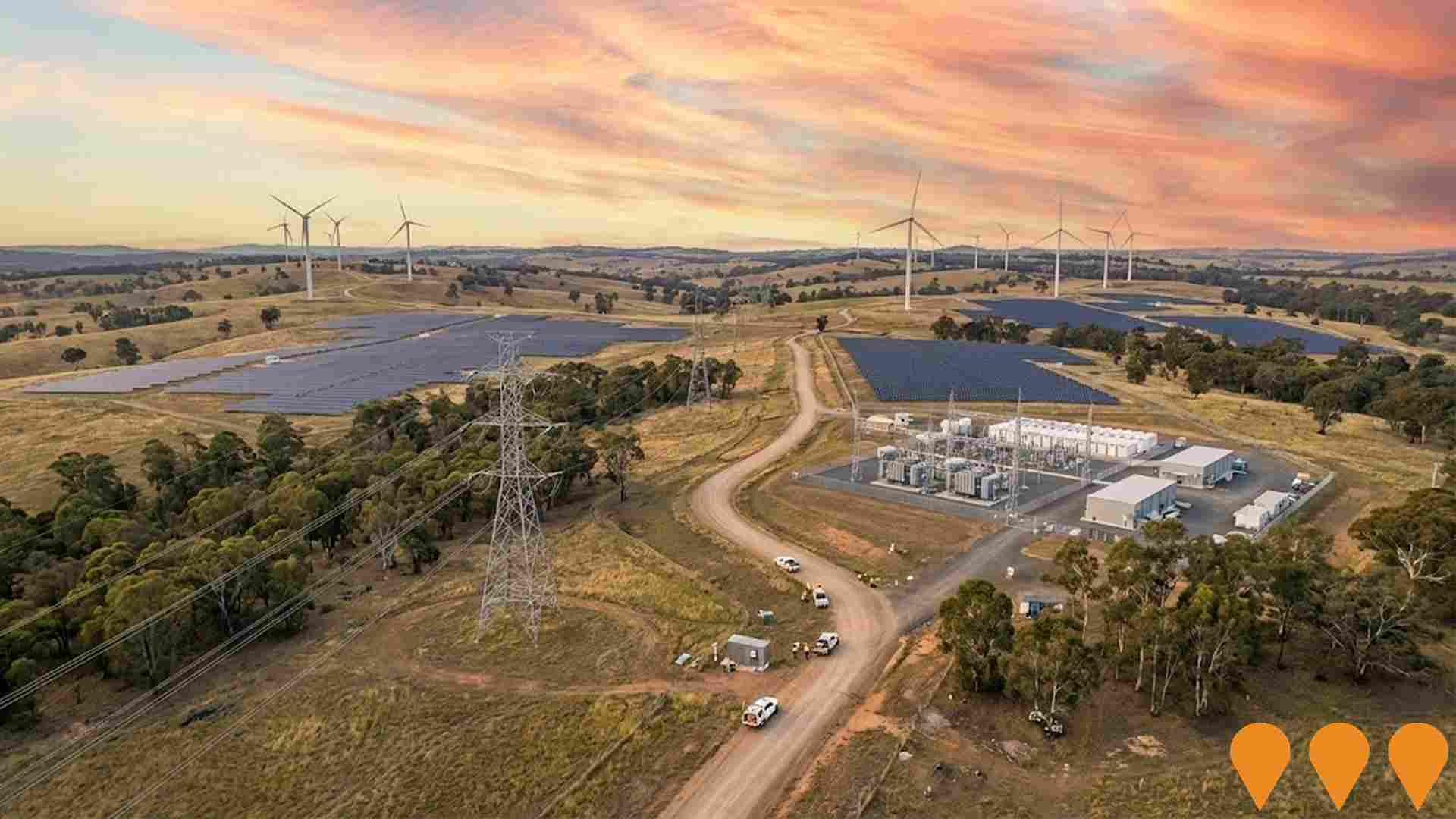
Dubbo Base Hospital Redevelopment Stages 3 & 4
The NSW Government invested $150 million to redevelop Dubbo Hospital in Stages 3 and 4, delivering a new three-storey clinical building including emergency department, medical imaging unit, ambulatory care services, critical care floor with intensive care unit and cardiac catheter laboratory to provide high-quality healthcare to Dubbo and western NSW communities.
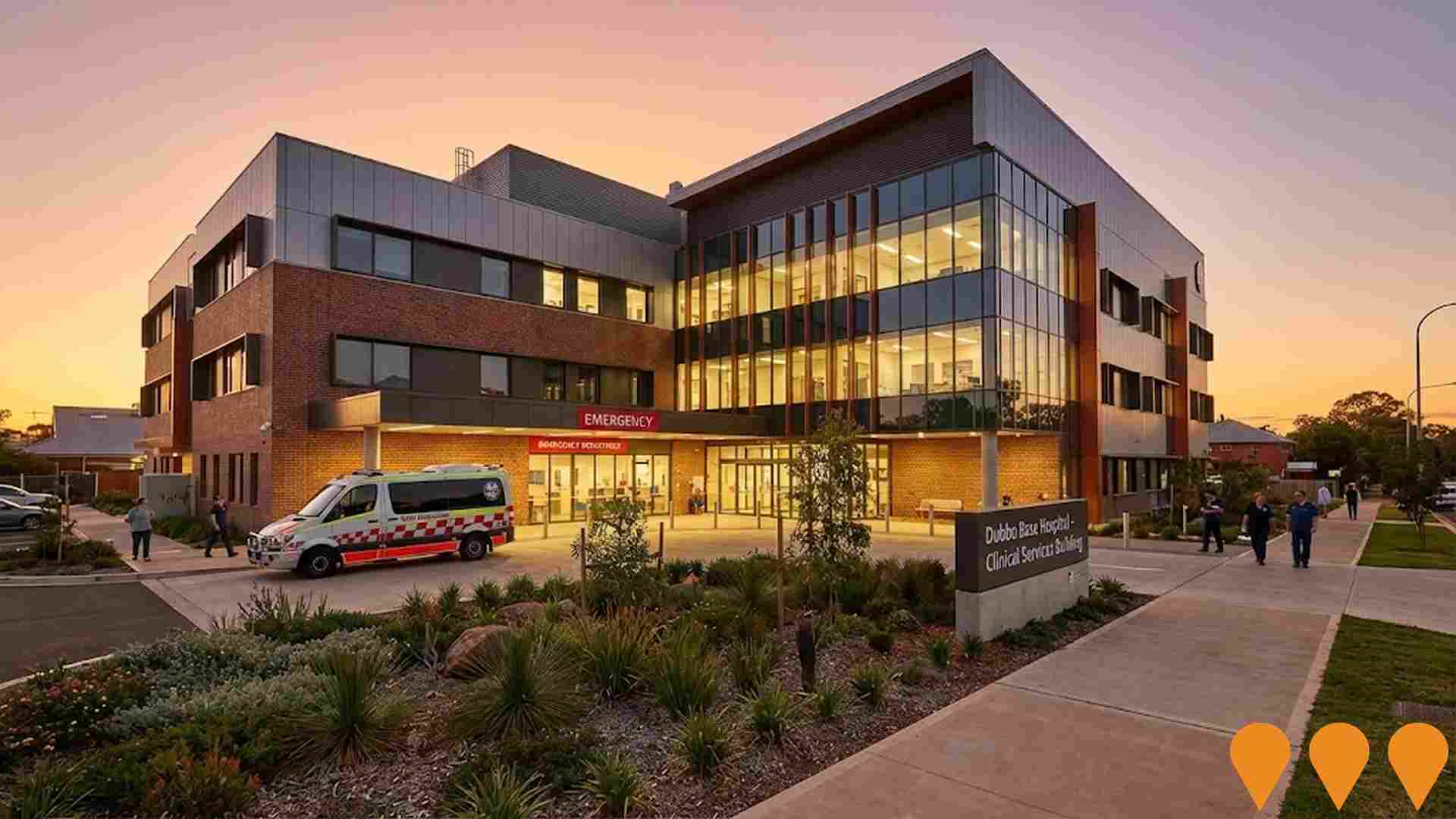
Western Cancer Centre Dubbo
The Western Cancer Centre Dubbo is a purpose-built two-storey facility providing life-saving cancer treatment and diagnostic services, including 16 chemotherapy spaces, radiation therapy bunker, PET CT scanner, wellness space, and support services for cancer patients in regional and remote areas of Western NSW.
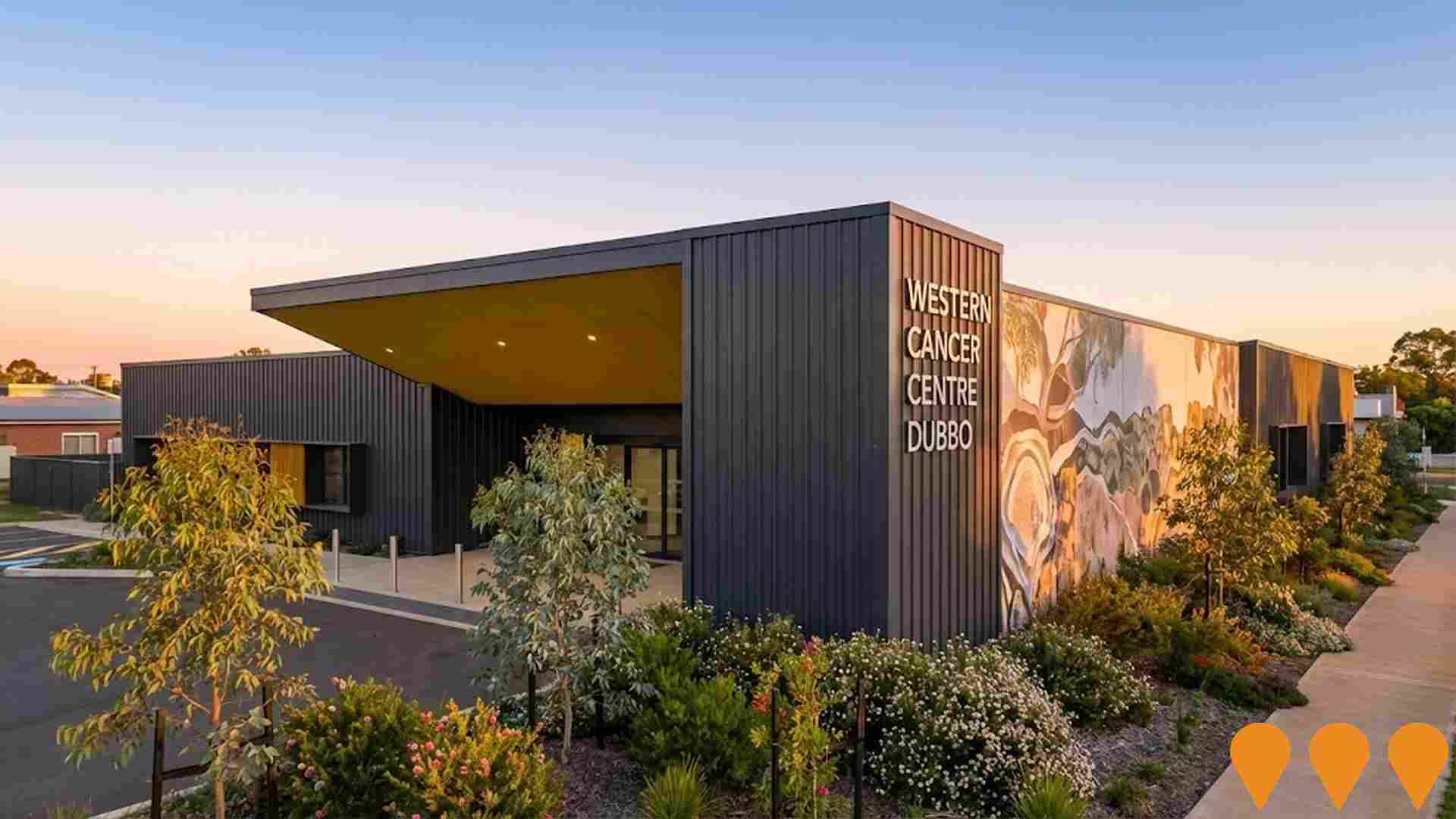
Dubbo Firming Power Station
A 64 MW dual-fuel (gas/hydrogen-capable) open-cycle power station with 17.5 MW hydrogen-ready electrolyser providing firming capacity and grid stability for the Central-West Orana Renewable Energy Zone.
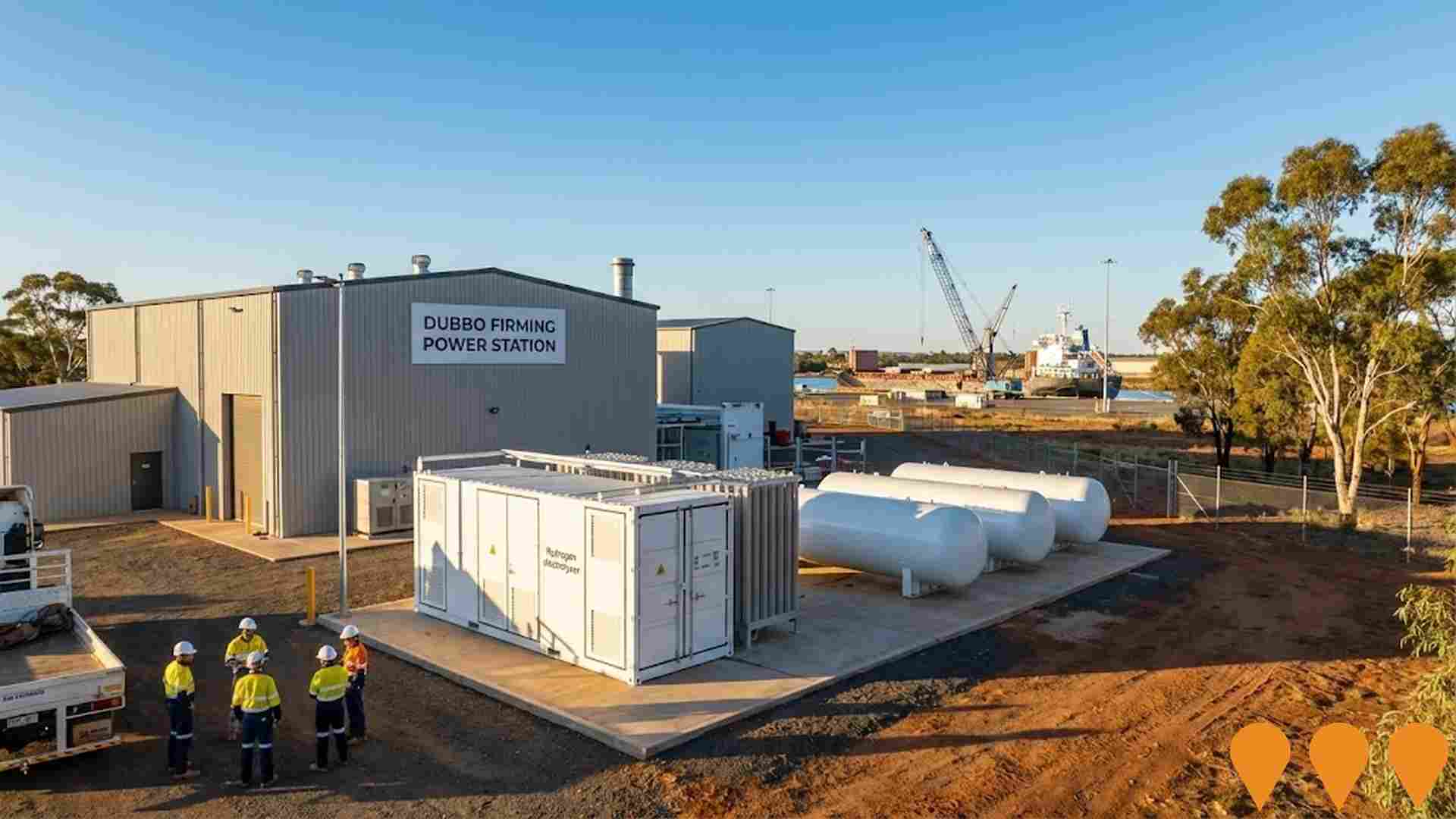
New Dubbo Bridge
Construction of a 660-metre high-level bridge over the Macquarie River including approach roads and intersection upgrades on the Newell Highway. The $263 million project improves flood immunity, reduces congestion in central Dubbo and supports future growth of approximately 5,500 new homes in South and West Dubbo. As of November 2025 all 84 girders are installed, more than 70% of the concrete deck is poured and barrier installation has commenced. The bridge is on track to open to traffic in mid-2026.
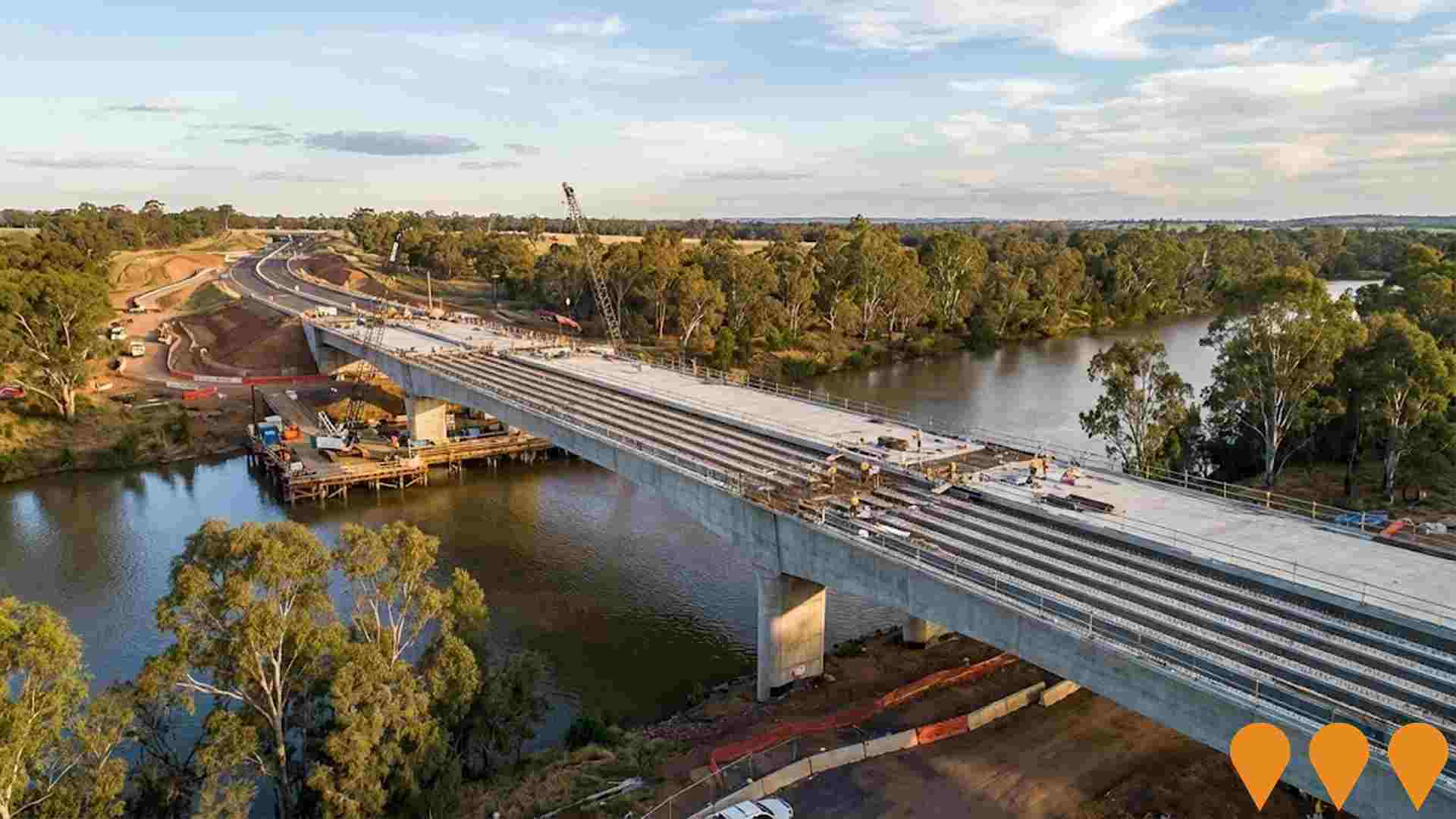
Dubbo Residential Rehabilitation Centre
A 24-bed residential rehabilitation centre providing withdrawal and rehabilitation care for alcohol and drug dependency. Stage 1 (16 beds) approved March 2025, Stage 2 (8 beds) under assessment. Includes detoxification services, residential accommodation, therapeutic programs, and community support facilities designed by Fulton Trotter Architects with culturally appropriate design principles.
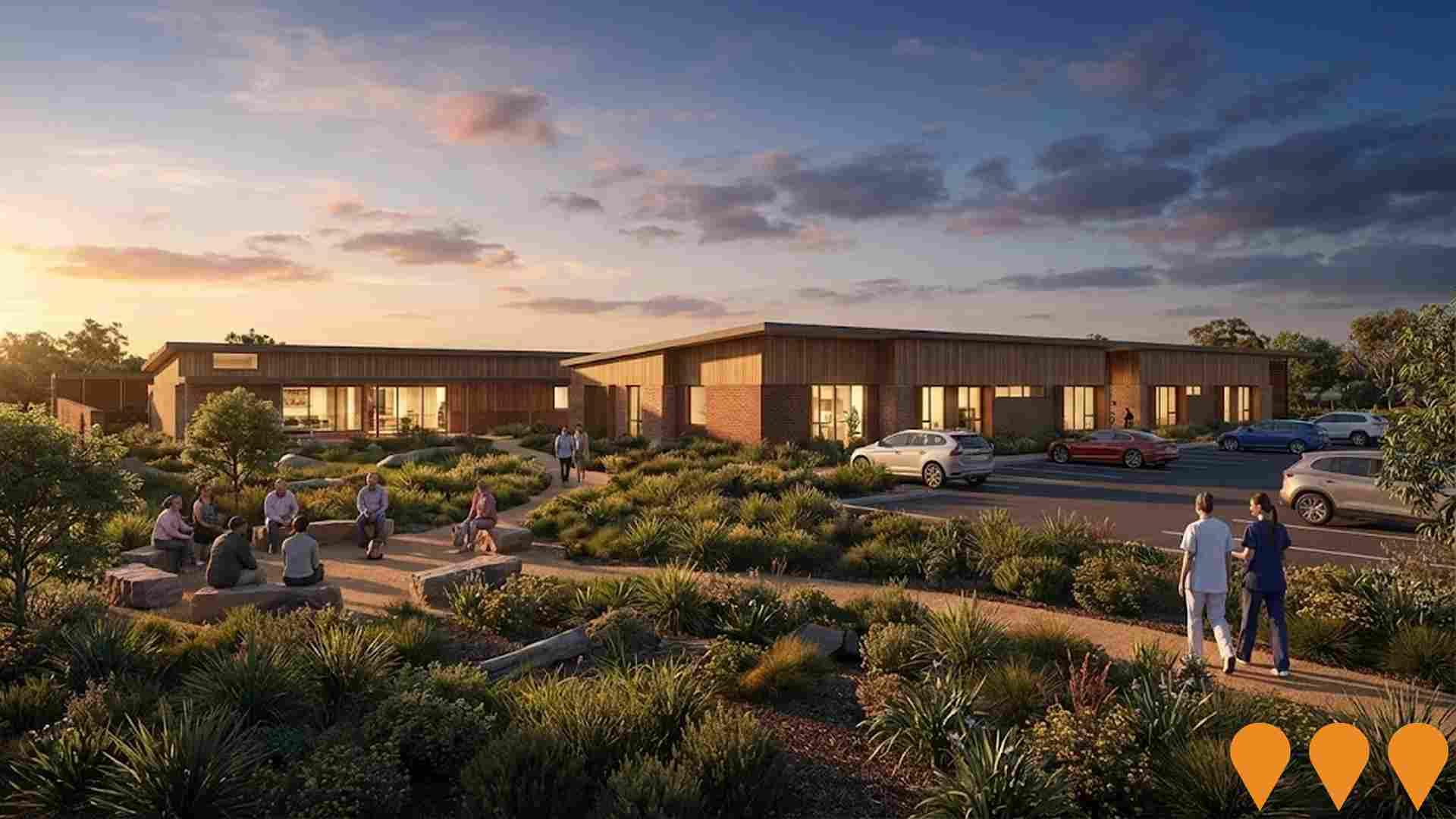
The Village Southlakes
A $32 million neighbourhood retail centre featuring a full-line Coles supermarket, Liquorland, medical centre, fitness gym, pharmacy, 16 specialty tenancies, 3 kiosk opportunities, food and beverage outlets, bakery, cafe, restaurant, newsagent, barber, hair salon and other community services. The 7,968 sqm development includes electric vehicle charging bays, bicycle parking, passive irrigation and solar power harvesting. Construction began June 2025 with expected opening July 2026.
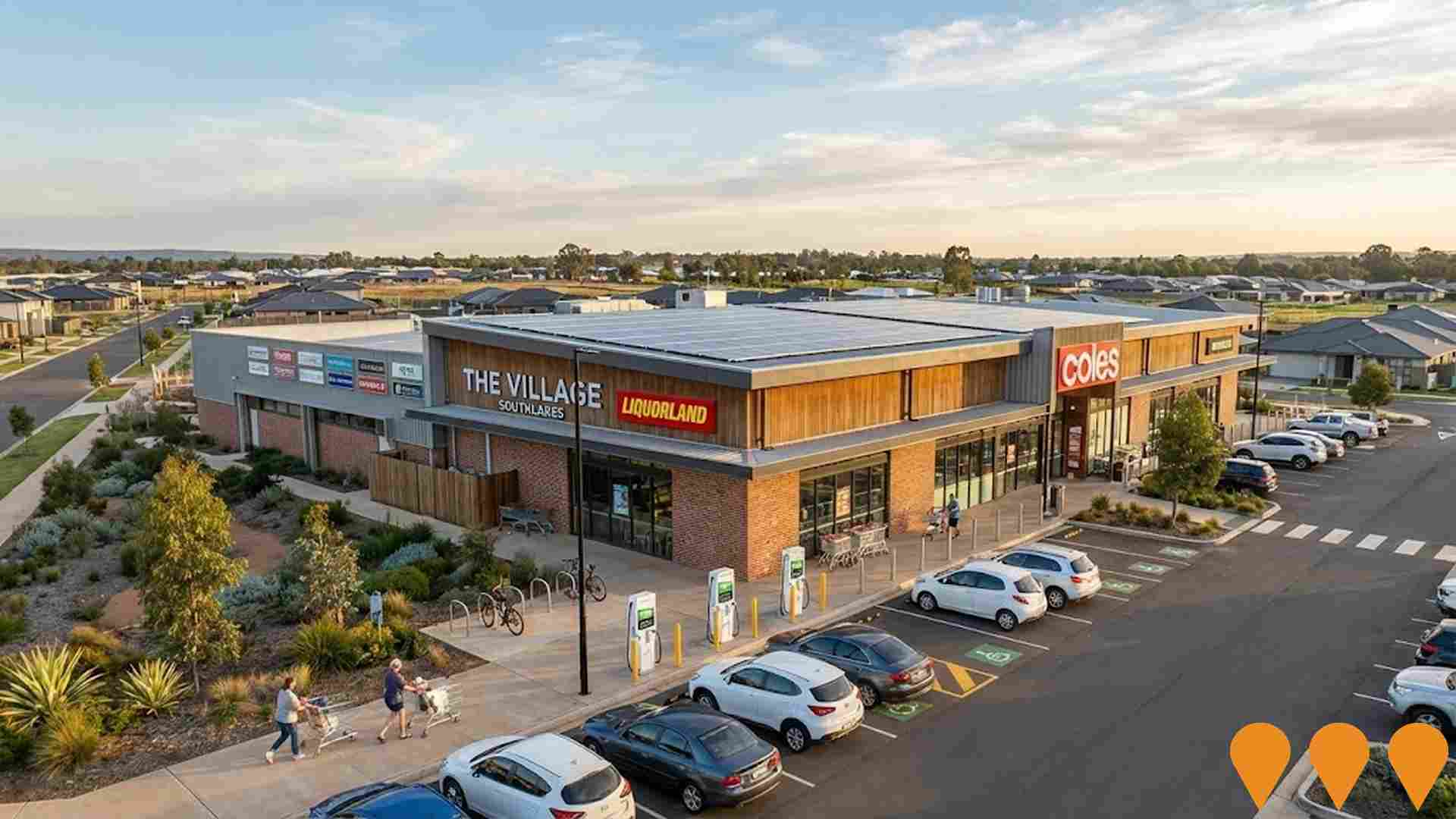
Southlakes Estate
Dubbo's largest premium residential estate featuring over 2300 planned dwellings across multiple releases, with diverse land lots from 400m2 to 2000m2. The master-planned community includes gated estates like Delta Shores, eight permanent lakes, waterways, parklands, bike tracks, and luxury facilities. Recent expansions include a new shopping centre with Coles and Liquorland, childcare centres, and additional residential subdivisions with semi-detached dwellings.
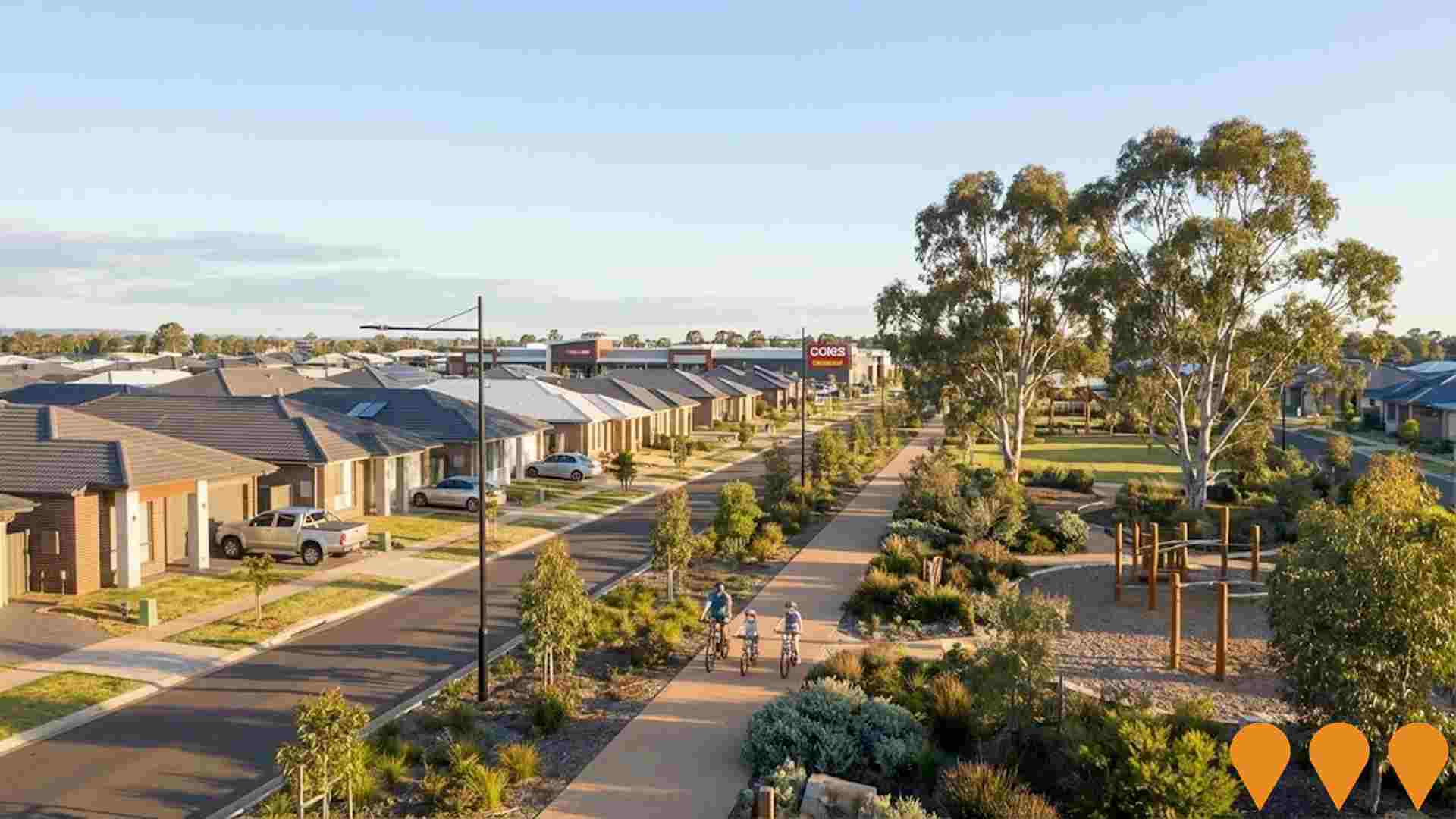
Employment
The employment landscape in Dubbo - West presents a mixed picture: unemployment remains low at 3.6%, yet recent job losses have affected its comparative national standing
Dubbo - West has an unemployment rate of 3.6% as of June 2025, with 5,047 residents employed. The unemployment rate is in line with the Rest of NSW's rate of 3.7%, and workforce participation stands at 60.5%.
Key employment industries include health care & social assistance, retail trade, and education & training. However, agriculture, forestry & fishing is under-represented, comprising only 2.4% of Dubbo - West's workforce compared to 5.3% in Rest of NSW. Analysis of SALM and ABS data for the 12-month period ending June 2025 showed a 1.8% decrease in labour force and a 3.1% decline in employment, leading to a 1.3 percentage point rise in unemployment rate.
In contrast, Rest of NSW experienced an employment decline of 0.1%, labour force growth of 0.3%, and a 0.4 percentage point increase in unemployment. National employment forecasts from Jobs and Skills Australia, released in May 2025, project national employment growth of 6.6% over five years and 13.7% over ten years. Applying these projections to Dubbo - West's employment mix suggests local growth of approximately 6.5% over five years and 13.7% over ten years.
Frequently Asked Questions - Employment
Income
Income levels align closely with national averages, indicating typical economic conditions for Australian communities according to AreaSearch analysis
AreaSearch's latest postcode level ATO data for financial year ended June 2022 indicates that Dubbo - West had a median income of $52,660 and an average income of $62,191. This is lower than the national averages of $49,459 (median) and $62,998 (average) for Rest of NSW. Based on Wage Price Index growth from June 2022 to September 2025, estimated median income would be approximately $59,300 and average income around $70,033. According to Census 2021 data, personal income ranks at the 59th percentile ($850 weekly) and household income at the 43rd percentile. The $1,500 - 2,999 earnings band includes 33.2% of individuals (3,675 people), similar to regional levels at 29.9%. After housing costs, 85.4% of income remains for other expenses. Area's SEIFA income ranking places it in the 4th decile.
Frequently Asked Questions - Income
Housing
Dubbo - West is characterized by a predominantly suburban housing profile, with a higher proportion of rental properties than the broader region
Dwelling structure in Dubbo-West, as per the latest Census, consisted of 86.3% houses and 13.8% other dwellings (semi-detached, apartments, 'other' dwellings). In comparison, Non-Metro NSW had 88.0% houses and 12.1% other dwellings. Home ownership in Dubbo-West stood at 29.2%, with mortgaged dwellings at 38.1% and rented ones at 32.7%. The median monthly mortgage repayment was $1,517, higher than Non-Metro NSW's average of $1,450. Median weekly rent in Dubbo-West was $320, compared to Non-Metro NSW's $280. Nationally, Dubbo-West's mortgage repayments were lower at $1,517 versus the Australian average of $1,863, and rents were substantially below the national figure of $375.
Frequently Asked Questions - Housing
Household Composition
Dubbo - West has a typical household mix, with a higher-than-average median household size
Family households constitute 71.4% of all households, including 29.4% couples with children, 26.2% couples without children, and 14.3% single parent families. Non-family households account for the remaining 28.6%, with lone person households at 25.2% and group households comprising 3.4%. The median household size is 2.6 people, larger than the Rest of NSW average of 2.5.
Frequently Asked Questions - Households
Local Schools & Education
Dubbo - West faces educational challenges, with performance metrics placing it in the bottom quartile of areas assessed nationally
The area's university qualification rate in 20.5% is substantially below the NSW average of 32.2%, indicating both a challenge and an opportunity for targeted educational initiatives. Bachelor degrees are most prevalent at 14.0%, followed by postgraduate qualifications (4.4%) and graduate diplomas (2.1%). Trade and technical skills are prominent, with 37.3% of residents aged 15+ holding vocational credentials – advanced diplomas (9.3%) and certificates (28.0%). Educational participation is high at 32.7%, including 12.6% in primary education, 8.8% in secondary education, and 2.6% pursuing tertiary education.
Dubbo - West operates a robust network of 7 schools educating approximately 1,681 students, comprising 2 primary, 2 secondary, and 3 K-12 schools.
Frequently Asked Questions - Education
Schools Detail
Nearby Services & Amenities
Transport
Transport servicing is moderate compared to other areas nationally based on assessment of service frequency, route connectivity and accessibility
Dubbo - West has 162 operational public transport stops. These are served by a total of 35 bus routes, offering 558 weekly passenger trips combined. The average distance from residents to the nearest stop is 146 meters, indicating excellent accessibility.
On average, there are 79 daily trips across all routes, which equates to approximately three weekly trips per individual stop.
Frequently Asked Questions - Transport
Transport Stops Detail
Health
Health performance in Dubbo - West is well below average with considerably higher than average prevalence of common health conditions and to an even higher degree among older age cohorts
Dubbo-West faces significant health challenges with a higher prevalence of common conditions compared to average SA2 areas, particularly among older age groups.
Approximately 51% (~5657 people) have private health cover, slightly lower than the average. The most prevalent conditions are asthma (9.8%) and arthritis (9.1%), while 64.8% report no medical ailments, similar to Rest of NSW's 64.1%. The area has a lower proportion of seniors aged 65 and over at 16.8% (1859 people) compared to Rest of NSW's 19.5%. However, health outcomes among seniors require more attention than the broader population.
Frequently Asked Questions - Health
Cultural Diversity
Dubbo - West ranks below the Australian average when compared to other local markets across a number of language and cultural background related metrics
Dubbo-West had a cultural diversity index below the average, with 85.4% of its population being Australian citizens, 89.0% born in Australia, and 91.5% speaking English only at home. The predominant religion in Dubbo-West was Christianity, accounting for 62.5% of the population, compared to 65.6% across the Rest of NSW. The top three ancestry groups were Australian (29.5%), English (28.1%), and Australian Aboriginal (14.1%).
Notably, Korean (0.2%) and Lebanese (0.2%) ethnicities were overrepresented in Dubbo-West compared to regional averages of 0.1% each. Irish ethnicity was slightly underrepresented at 7.7%, compared to the regional average of 8.2%.
Frequently Asked Questions - Diversity
Age
Dubbo - West hosts a young demographic, positioning it in the bottom quartile nationwide
Dubbo - West has a median age of 34, which is lower than the Rest of NSW figure of 43 and significantly lower than Australia's median age of 38 years. Compared to the Rest of NSW average, Dubbo - West has an over-representation of the 25-34 cohort (17.1% locally) and an under-representation of the 65-74 year-olds (7.8%). Between 2021 and present, the 25 to 34 age group grew from 15.2% to 17.1%, while the 15 to 24 cohort increased from 12.3% to 13.5%. Conversely, the 5 to 14 cohort declined from 15.2% to 13.3%, and the 45 to 54 group dropped from 10.8% to 9.7%. Demographic modeling suggests that Dubbo - West's age profile will evolve significantly by 2041. The 25 to 34 age cohort is projected to expand notably, increasing by 591 people (31%) from 1,889 to 2,481. Meanwhile, the 5 to 14 cohort grows by a modest 5% (69 people).
